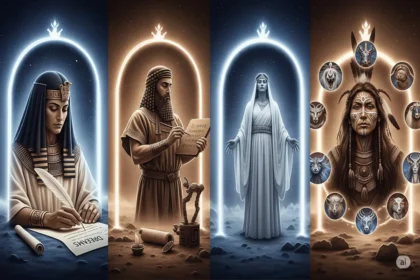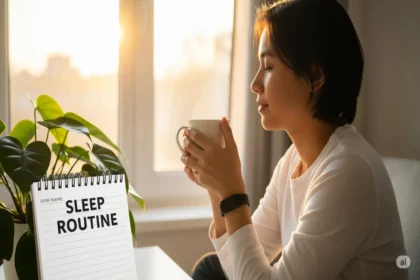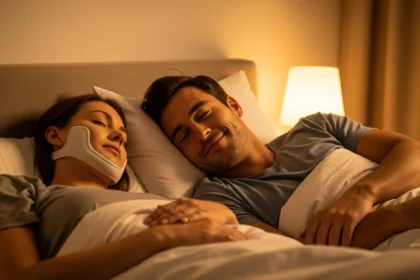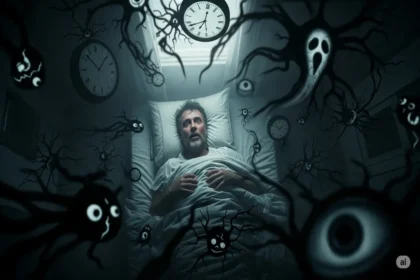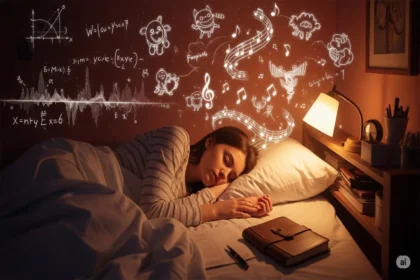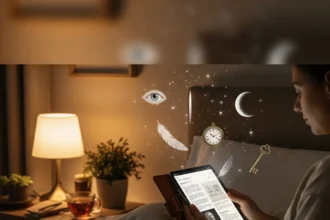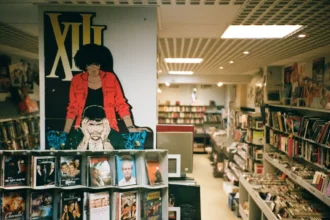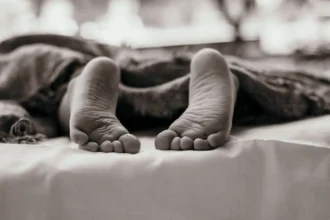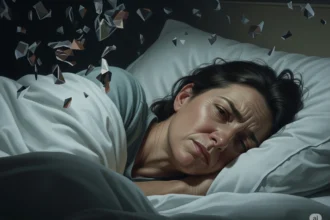The realm of dreams has always been a landscape of profound mystery, a nocturnal theatre where our subconscious plays out narratives, emotions, and sensations. For those of us who experience the waking world through sight, dreams are overwhelmingly visual – a vibrant, often bizarre, kaleidoscope of images, faces, and places. This visual dominance often leads to a curious question, one that sparks both scientific inquiry and empathetic contemplation: Do blind people dream? The surprising science behind their subconscious worlds reveals a rich, multi-sensory tapestry that challenges our sighted-centric notions of what it means to experience a dream.
It’s a question that taps into our fundamental understanding of perception and consciousness. If sight is the primary conduit for information about the world, what happens when that conduit is absent or removed? Do the brain’s dreaming circuits simply go dark, or do they adapt, drawing upon other sensory wellsprings to construct entirely different realities? The answer is a resounding yes, blind individuals do dream, and their dreams offer a powerful testament to the brain’s incredible plasticity and the boundless nature of the human imagination.
The Nuance of Blindness: When Vision Disappears
To truly understand the dreams of blind individuals, it’s crucial to distinguish between two main categories of blindness:
- Congenital Blindness: Individuals who are blind from birth or lose their sight very early in life (typically before the age of 5-7). For these individuals, the brain has never received visual input from the eyes.
- Adventitious Blindness (Late-Onset Blindness): Individuals who once had sight but lost it later in life. Their brains have a library of visual memories to draw upon.
This distinction profoundly influences the sensory landscape of their dreams.
Dreams of the Adventitiously Blind: Echoes of the Seen World
For those who lose their sight later in life, their dreams often retain a visual component, sometimes for many years, even decades, after vision has faded. This isn’t surprising, as their brains have established neural pathways for processing visual information and have a vast reservoir of visual memories to draw upon.
- The Science: When a sighted person dreams, the visual cortex (the part of the brain responsible for processing visual information) is highly active during REM sleep. For individuals with adventitious blindness, this visual cortex can still be activated, replaying and recombining stored visual memories. The older they were when they lost their sight, the more likely and vivid their visual dreams tend to be. This suggests that once visual pathways and memory stores are well-established, they can continue to function in the absence of external visual input.
- The Anecdote: Consider Sarah, who lost her sight due to a degenerative eye condition in her early 30s. “For years after I went blind, my dreams were still full of color and light,” she shared. “I would dream of hiking in the mountains, seeing my children’s faces, driving my car. It was incredibly vivid, sometimes almost disorienting to wake up to darkness. Over time, the visual details became a little less crisp, but the ability to ‘see’ in my dreams still provides a powerful connection to my past.” This phenomenon highlights the brain’s remarkable capacity to tap into its existing neural architecture, even when the external sensory input is gone.
However, even for the adventitiously blind, a fascinating shift often occurs. As time passes without external visual input, their dreams may become less intensely visual, and other senses tend to become more prominent, mirroring how they navigate their waking world.
Dreams of the Congenitally Blind: A Symphony of Other Senses
This is where the science becomes truly surprising and profoundly insightful. For individuals born blind, who have never experienced conscious visual perception, their dreams are, by definition, non-visual in the way sighted people understand it. Yet, their dreams are anything but empty or devoid of sensory richness. Instead, their subconscious worlds are vibrant tapestries woven from sound, touch, smell, taste, and emotion.
- The Science: Research using brain imaging techniques (like fMRI) on congenitally blind individuals during REM sleep has shown activation in areas of the brain typically associated with vision. This doesn’t mean they are “seeing” in the traditional sense, but it suggests that the brain’s visual cortex, deprived of its primary input, undergoes neuroplastic changes. It repurposes itself to process information from other senses, integrating it into what might be called “virtual” or “abstract” visual experiences, or perhaps processing sensory information in a spatial way that sighted people might metaphorically describe as “seeing.”Crucially, studies comparing the dream reports of congenitally blind individuals with sighted individuals reveal striking differences in sensory content. The dreams of the congenitally blind are significantly richer in:
- Auditory sensations: Sounds, voices, music, environmental noises.
- Tactile sensations: Feeling textures, temperatures, movement, pain, pressure.
- Olfactory sensations: Smells – food, flowers, people, environments.
- Gustatory sensations: Tastes – of food or drink.While sighted individuals report these senses in dreams far less frequently, they are central to the dream experiences of those born without sight. These enhanced sensory experiences in dreams reflect the heightened reliance on these senses in their waking lives.
- The Anecdote: Take Leo, who was born blind. His dreams are a symphony of sounds – the distinct rustle of leaves indicating a breeze, the specific cadence of his mother’s voice, the familiar clinking of dishes in his kitchen. He “feels” the texture of his dog’s fur, the warmth of the sun on his skin, or the chilling dampness of rain. The smells of baking bread or fresh cut grass are often prominent. “I don’t ‘see’ anything in my dreams,” Leo explained, “but I experience everything. I move through spaces, I interact with people, I understand where things are based on sounds, echoes, and how my body feels as I navigate. It’s a completely immersive experience, just not with light.” His dreams are as full, vivid, and meaningful as those of a sighted person, simply constructed from a different sensory palette.
Beyond Sensory Content: Themes and Emotions
Regardless of how sight is experienced in dreams, the emotional content and common themes often remain surprisingly consistent between blind and sighted individuals. Dreams still serve as a processing ground for daily experiences, fears, desires, and anxieties.
- Common Themes: Like sighted people, blind individuals dream about social interactions, success and failure, work, school, and personal relationships. However, there are some notable differences that reflect their unique waking realities. Research indicates that blind people tend to have more dreams about:
- Movement and travel: Often involving scenarios of getting lost or navigating challenging environments, reflecting the complexities of spatial orientation in waking life.
- Misfortune: Some studies suggest a higher frequency of nightmares among congenitally blind individuals, often related to threats they might face in their waking lives, such as falling, being hit by cars, or losing a guide dog. This underscores the continuity hypothesis of dreaming, where dream content reflects waking concerns.
- Emotional Depth: The emotional intensity of dreams does not differ based on visual status. Blind individuals experience joy, fear, sadness, anger, and love in their dreams with the same profound impact as sighted individuals. The dream state is a universal emotional processing mechanism.
The Brain’s Adaptability: Neuroplasticity in Action
The phenomenon of dreaming in blind individuals is a powerful illustration of neuroplasticity, the brain’s remarkable ability to reorganize itself by forming new neural connections throughout life. When visual input is absent, particularly from birth, the brain doesn’t just leave the visual cortex dormant. Instead, it “rewires” these areas to process information from the remaining senses.
This means that while a congenitally blind person’s visual cortex isn’t processing external light, it might be actively involved in processing auditory localization, tactile discrimination, or even language. When they dream, this repurposed visual cortex, alongside other sensory areas, contributes to a rich, integrated, non-visual dream experience. The brain finds a way to create a coherent, immersive reality, drawing on whatever sensory data is available and meaningful to the individual.
A Reflection on Consciousness and Perception
The exploration into how blind people dream opens a window into the very nature of consciousness and perception. It challenges us to reconsider what “seeing” truly means, both in waking life and in our nocturnal narratives. It suggests that while external sensory input shapes our waking reality, the brain’s capacity to create vivid, meaningful experiences from internal processes is far more profound and adaptable than we might initially assume.
For a sighted person, to imagine a dream without images might feel like imagining nothing at all. But the science reveals that a non-visual dream is not an absence; it is a presence, a world constructed with equally rich and complex sensory details. It underscores that our reality, even the reality we inhabit in dreams, is fundamentally a product of our brains, shaped by our experiences and the unique ways our neural networks process the world.
So, the next time you reflect on your own dreams, perhaps consider the unseen dimensions of experience that exist for others. The subconscious world is a boundless frontier, and the dreams of blind individuals serve as a powerful reminder that the human spirit, and the human brain, can create an entire universe of experience, even when the lights are out, and always, in surprising and profound ways.
Disclaimer: The information provided in this article is for general informational purposes only and does not constitute medical advice. It is not a substitute for professional medical advice, diagnosis, or treatment. Always seek the advice of your physician or other qualified health provider with any questions you may have regarding a medical condition. Never disregard professional medical advice or delay in seeking it because of something you have read on this website.



